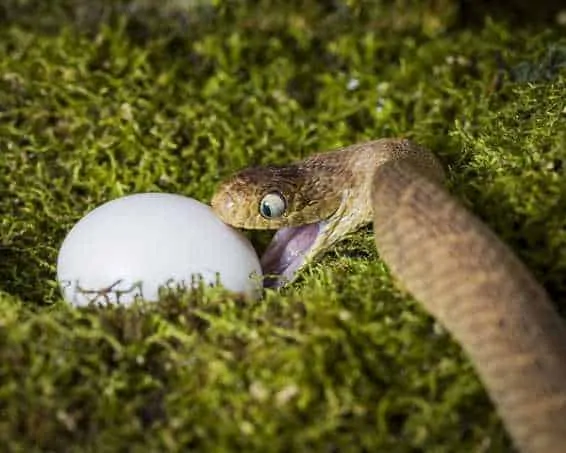
Description:
Scientific name: Dasypeltis scabra
Life span: 10-15 years
The non-venomous snake species Dasypeltis scabra is also referred to as the common egg eater, egg-eating snake, or rhombic egg eater. It features a sequence of rhombic dark brown dots on a lighter backdrop on the dorsal side. Each side has a different pattern of brown spots that alternate, and the back of the neck has a characteristic V-shaped mark. It is yellowish on the ventral side, either uniformly or with dark spots.
Native Region/Habitat
Sub-Saharan Africa is where Dasypeltis scabra can be found. Moreover, it is present in Saudi Arabia and other Middle Eastern nations.

Behavior:
The rhombic egg eater feeds at night. While primarily terrestrial, it has been observed to scale rocky outcrops and ascend trees in order to raid bird nests.
Care As a pet/In captivity:
Enclosure: Although they do climb, African egg-eating snakes are mostly terrestrial in nature. They require more floor area as a result than climbing space. A tank that is at least 24 inches wide, roughly 18 inches deep, and 12 inches tall is advised. The ideal reptile enclosure has a door that faces the front.
Temperature: The enclosure’s ambient temperature should be roughly 70 degrees Fahrenheit on average. Egg-eating snakes are cold-blooded, just like all snakes. They move to various temperature zones as a result of thermoregulation. You require a warm side and a chilly side in your enclosure. 90 degrees Fahrenheit should be the warm side. An under-tank heating pad or a basking lamp can help you reach this temperature. Snakes that consume eggs in Africa may withstand temperature drops at night. Never, however, should the temperature drop below 60 degrees. Install a heat emitter if they do to provide some warmth all night long. These snakes require a typical day-night cycle. If you want to make sure that the snake’s routine remains consistent, attach your normal lights to a timer.
Humidity: Egg-eating snakes need an enclosure with a humidity level of 40 to 60 percent. Once per day spritz the enclosure to increase humidity levels. It will be simple to maintain consistency in the environment because a portion of this moisture will be absorbed by the substrate and plants.
Feeding: Egg-eating snakes need an enclosure with a humidity level of 40 to 60 percent. Once per day spritz the enclosure to increase humidity levels. It will be simple to maintain consistency in the environment because a portion of this moisture will be absorbed by the substrate and plants.
Table





